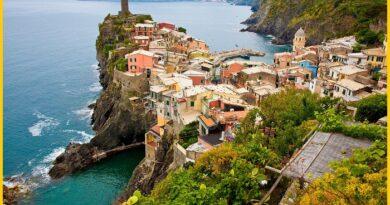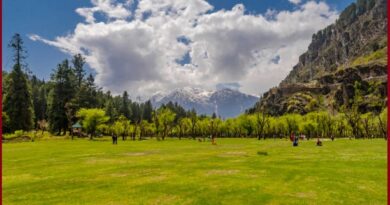Exploring the Vibrant City of Harare- The Capital of Zimbabwe
Capital of Zimbabwe-Harare
The Capital of Zimbabwe Harare is located in the northeastern part of the country. It is the largest city in Zimbabwe, with a population of around 1.5 million people. The city is known for its wide boulevards, green spaces, and modern architecture, as well as its vibrant culture and bustling street markets.
Harare is home to many important government buildings, including the Zimbabwean government, the University of Zimbabwe, and several museums and art galleries. The city’s National Gallery of Zimbabwe is one of the most important art museums in the region, featuring a large collection of contemporary African art. Harare is also known for its lively music and dance scene, with many clubs and venues featuring traditional Zimbabwean music and popular genres like hip hop and reggae.
Despite its modern culture, Zimbabwe capital Harare still retains a strong connection to Zimbabwe’s history and culture. Visitors to the city can explore sites like the National Heroes Acre, a monument to the country’s independence struggle, or the Mbare Musika Market, where they can buy local crafts and fresh produce.
Zimbabwe
Zimbabwe Africa is a landlocked country located in Southern Africa. It is bordered by South Africa to the south, Botswana to the west, Zambia to the northwest, and Mozambique to the east. The capital and largest city is Harare.
Zimbabwe has its official languages are English, Shona, and Ndebele. The country’s economy is dominated by agriculture, mining, and tourism, with its rich mineral resources, such as gold, platinum, and diamonds, being major contributors to its economy.
Zimbabwe Africa was formerly known as Rhodesia, a British colony, before gaining independence in 1980. The country has had a tumultuous history, with a long period of colonialism followed by a struggle for independence, and then a period of political and economic turmoil in the 2000s.

Great zimbabwe empire
Great Zimbabwe was an ancient city and empire that existed in southeastern Africa from the 11th to the 15th centuries. The city was built by the Shona people, who inhabited the region between the Zambezi and Limpopo rivers.
Great Zimbabwe was a major center of trade and commerce, with a sophisticated economy based on agriculture, mining, and long-distance trade. The city was strategically located near important trade routes, which allowed it to control the flow of goods and people between the interior of Africa and the coast.
The city was built of stone, using a technique known as dry stone walling, which involves fitting stones together without the use of mortar. The ruins of Great Zimbabwe are the largest in sub-Saharan Africa and are a UNESCO World Heritage Site.
The city was abandoned in the 15th century, for reasons that are still debated by historians and archaeologists. Some theories suggest that overuse of resources, environmental degradation, and conflict with neighboring groups led to the decline of the city and the collapse of the empire.
Geography and Geology
Most of the country is elevated, consisting of a central plateau stretching from the southwest northwards with altitudes between 1,000 and 1,600 m. The country’s extreme east is mountainous, this area being known as the Eastern Highlands, with Mount Nyangani as the highest point at 2,592 m.
The highlands are known for their natural environment, with tourist destinations such as Nyanga, Troutbeck, Chimanimani, Vumba and Chirinda Forest at Mount Selinda. Victoria Falls, one of the world’s largest and most spectacular waterfalls, is located in the country’s extreme northwest and is part of the Zambezi river. Over geological time Zimbabwe has experienced two major post-Gondwana erosion cycles and a very subordinate Plio-Pleistocene cycle.
The geology of Zimbabwe is centered on the Zimbabwe Craton that composed of granitoids, schist and gneisses. It also incorporates greenstone belts comprising mafic, ultramafic and felsic volcanics. The craton is overlain in the north, northwest and east by Proterozoic and Phanerozoic sedimentary basins.

The Zimbabwe Craton is intruded by an elongate ultramafic/mafic igneous complex known as the Great Dyke which runs for more than 500 km along a SSW/NNE oriented graben. The dyke consists of peridotites, pyroxenites, norites and bands of chromitite.
Capital of Zimbabwe Harare best Attraction
The capital of Zimbabwe Harare, has many attractions that are worth seeing. Some of the best places to visit in Harare:
National Gallery of Zimbabwe – this art gallery is home to a diverse collection of contemporary African art and is a must-visit for art lovers.
Chapungu Sculpture Park – this outdoor park features over 80 stone sculptures created by local artists and is a great place to admire Zimbabwean art and culture.
Mbare Musika Market – this bustling market is a great place to experience Zimbabwean culture and buy souvenirs, fresh produce, and handmade crafts.
Harare Gardens – this public park is a popular spot for picnics, walks, and relaxing, and also features a mini zoo, a playground, and a rose garden.

Mukuvisi Woodlands – this nature reserve is located in the heart of Harare and is home to a variety of wildlife, including zebras, giraffes, and antelopes.
National Heroes Acre – this monument is dedicated to the fallen heroes of Zimbabwe’s liberation struggle and offers a glimpse into the country’s history and political landscape.
Things to do in Zimbabwe
Victoria Water falls
Victoria waterfalls is one of the most famous natural wonders of the world, located on the border of Zimbabwe and Zambia. The waterfalls are formed by the Zambezi River, which plunges over a 100-meter-high cliff, creating a cloud of mist and a thundering roar that can be heard from miles away.
In Zimbabwe, Victoria Falls is situated within the Victoria Falls National Park, which covers an area of 23 square kilometers. The park is home to a wide variety of wildlife, including elephants, buffalos, zebras, giraffes, and several species of antelopes. Visitors can go on a safari to see these animals up close, or take a scenic helicopter ride over the falls for an unforgettable view.
One of the best ways to experience Victoria waterfalls is by taking a guided tour, which can be arranged through local operators or hotels. There are several trails that offer different perspectives of the waterfalls, including the Devil’s Cataract, Main Falls, Rainbow Falls, and Danger Point. Visitors can also take a dip in the Devil’s Pool, a natural pool located at the edge of the falls, which offers a thrilling and unique experience.
For those seeking adventure, there are several adrenaline-pumping activities available, such as bungee jumping, white-water rafting, zip-lining, and helicopter tours. There are also several cultural activities available, such as visits to local villages, traditional dance performances, and craft markets.
Zimbabwe safari
Zimbabwe is a fantastic destination for a safari adventure. The country has several national parks and game reserves where visitors can witness some of the most impressive wildlife in Africa. Hwange National Park is Zimbabwe’s largest national park and one of the best places in Africa for seeing elephants, with over 40,000 elephants living in the park. Mana Pools National Park and Mana Pools is a UNESCO World Heritage Site and one of the best places in Zimbabwe for a walking safari. Visitors can get up close to wildlife such as elephants, hippos, and crocodiles. Matobo National Park, Gonarezhou National Park, Matusadona National Park, Chizarira National Park and Zambezi National Park.

Explore Great Zimbabwe
The ancient city is the largest ruins complex in sub-Saharan Africa and is a UNESCO World Heritage Site. The stone ruins of Great Zimbabwe were built between the 11th and 15th centuries by the Shona people.
Visit Matobo Hills
Matobo Hills is a UNESCO World Heritage Site located in southern Zimbabwe. It is home to some of the most impressive rock formations in Africa, as well as ancient San rock art.
Capital of Zimbabwe Harare
Zimbabwe’s capital city is a vibrant and lively place, full of history, culture, and excellent food. Visit the National Gallery of Zimbabwe, explore the markets, or simply enjoy the city’s lively atmosphere.
Hot air balloon ride in Zimbabwe
Hot air balloon rides in Zimbabwe offer a unique and thrilling way to experience the stunning landscapes and wildlife of this beautiful African country. One popular destination for hot air balloon rides in Zimbabwe is the UNESCO World Heritage-listed Mana Pools National Park.
During a hot air balloon ride over Mana Pools, you can take in the incredible views of the park’s floodplains, forests, and Zambezi River. You may also spot a variety of wildlife from above, including elephants, lions, hippos, and more. The ride typically lasts for around an hour, and you can enjoy a champagne breakfast after landing.
Experience the culture
Zimbabwe has a rich cultural heritage, with many traditional dances, music, and crafts to discover. Visit a local village or attend a traditional ceremony to learn more about the culture.
Go hiking
Zimbabwe offers several hiking opportunities, ranging from easy walks to challenging treks. The Matobo Hills are located in western Zimbabwe, near the city of Bulawayo. The hills are known for their stunning rock formations and ancient rock art. There are several hiking trails in the area, ranging from short walks to multi-day treks. Visitors can also go on a guided hike to visit the rock art sites and learn about the history and culture of the area.

Nyanga National Park is located in northeastern Zimbabwe, near the border with Mozambique. The park offers several hiking trails, ranging from easy walks to challenging treks. The area is known for its stunning waterfalls, mountain vistas, and wildlife.
Hwange National Park is located in western Zimbabwe and is known for its wildlife and stunning scenery. The park offers several hiking trails, ranging from easy walks to multi-day treks. Visitors can hike to waterholes to watch animals or explore the park’s diverse habitats.
Relax at Lake Kariba
Lake Kariba is a beautiful man-made lake on the Zambezi River. Relax on the beach, go fishing, or take a boat tour to see the lake’s impressive wildlife.
How to reach Zimbabwe
The most convenient way to reach Zimbabwe is by air. The country has several international airports, including Harare International Airport, Victoria Falls International Airport, and Joshua Mqabuko Nkomo International Airport. These airports receive flights from major cities in Africa and around the world, including Johannesburg, Cape Town, Nairobi, Dubai, and London. Many major airlines offer flights to Zimbabwe, including South African Airways, Ethiopian Airlines, British Airways, and Emirates.
Zimbabwe has several border crossings with neighboring countries, including South Africa, Botswana, Zambia, and Mozambique. Visitors can drive into the country or take a bus from nearby cities. However, the quality of roads and border crossings varies, and some crossings may have long wait times or require visas.
The luxury train, the Rovos Rail, connects South Africa and Zimbabwe and offers a scenic and comfortable way to travel between the two countries. However, train travel in Zimbabwe is generally not recommended due to safety concerns.



